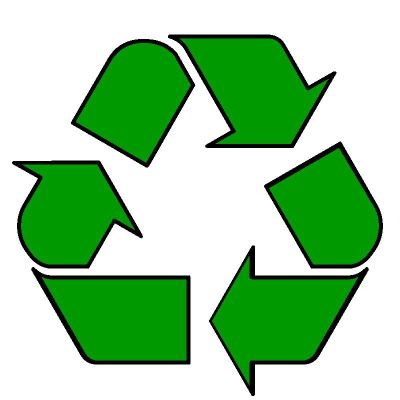Information Compiled by Sandra Phillips
Studio 5 home and family efficiency specialist
www.live-right.com
__________________________________________________________
America’s Recycle Day was yesterday (November 15, 2007).
In observance, tomorrow (Sat. Nov. 17) two major events are happening in Salt Lake.
1) The 11th annual leaf debagging service project from 9 am – 1 pm at 6030 W. California Avenue (see www.recycle.slco.org), and
2) Electronic scrap recycling (computers, TV’s) from 9 to noon at the South Salt Lake Transfer Station parking lot (502 W 3300 S). This is free for residents of Salt Lake County. Businesses will be billed a nominal fee.
It is encouraging that there was a 78% increase in business recycling in Salt Lake Valley in 2006!
The EPA (Environmental Protection Agency) has set a national goal to recycle 25% of our national waste. Recycled materials can be used for anything from energy to clothing.
We can protect the Earth by recycling much of our household and work waste for reuse.
With just a little awareness, and a few changes in our routines, we can do our part!
Recycling must start at home!
You can recycle on your doorstep. On average, it has been estimated that every person throws away their own body weight in trash, every 7 weeks.
Step 1: Learn what can be recycled
Many cities and counties now have government-run curbside recycling programs. They don’t recycle everything, but do pick up the most common things like cans, plastic, glass, and newspaper. Check with your city to find out exactly what they take. (see website contacts below)
Step 2: For larger items like computers and printers look for nonprofit organizations that specialize in redistributing technology such aswww.cristina.org which places refurbished computers in educational nonprofit organizations and www.worldcomputerexchange.org, which gives donated techno-goods to kids in developing countries.
Step 3: For cell phones go to www.recyclewirelessphones.com and the site will list the recycling and donation policies of the most popular cellular phone companies.
Step 4: Aluminum cans that are recycled amazingly require only 5% of the energy it takes to make them new. Just one recycled aluminum can saves enough energy to run a television set for 3 hours! In Salt Lake there are buy-back centers at seven locations.*
You can drop off aluminum drink cans and cat food cans rinsed and crushed. Do not bring aluminum foil.
Step 5: Glass can be recycled again and again without losing its clarity or purity. Making glass bottles and jars from recycled ones saves energy. The energy saving from recycling one bottle will power a 100 watt light bulb for almost an hour, power a computer for 20 minutes, or power a washing machine for 10 minutes. Separate them out as to brown and clear/green/blue. They do not want caps or lids.
For eye glasses www.lionsclub.org runs a recycling program that delivers glasses to those in need all over the world. You can drop old specs at LensCrafters, Pearle Vision, Sears Optical, Target and other locations. Talk to your eye doctor.
Step 6: Paper recycling is critical since 1/5 of the contents of household trash consists of paper, of which nearly half is newspapers and magazines. This is done most popularly right on curb side, although there are many receptacles in grocery store parking lots.
Step 7: Clothing that is gently used, can be taken to charities like Salvation Army, Good Will and Deseret Industries. Some of these clothing charities claim to only be operating at about 25% capacity so they could much more!
Step 8: plastics recycling is the most dramatic of all recycling. Plastic production uses 8% of the world’s oil. Recycling twenty-five 2-litre pop bottles saves enough energy to make one adult-sized fleece jacket!
The world’s annual consumption of plastic materials has increased from around 5 million tons in the 1950s to nearly 100 million tons today. Clear plastics 1 and 2 (see triangles on bottom) and 7 are the most commonly accepted for recycling.
Type 1 and 2 plastics include detergent containers, milk, soft drinks, juice, and water bottles. These will be recycled into carpet, auto parts, paint brushes and even trash cans
Type 3 is plastic food wrap and vegetable oil bottles.
Type 4 is grocery bags. Right now Wal-Mart will collect them
Type 5 includes yogurt containers, syrup bottles, and bottle tops
Type 6 is plastic utensils and plastic cups, egg cartons, and protective packaging for toys
Type 7 is layered or mixed plastic as in melamine.
Some items in 3, 5, 6 and 7 are recyclable but most are not.
The Different Types
What do they all mean?
To make sorting and thus recycling easier, the American Society of Plastics Industry developed a standard marking code to help consumers identify and sort the main types of plastic.
These types and their most common uses are:
PET Polyethylene terephthalate – Fizzy drink bottles and oven-ready meal trays
HDPE High-density polyethylene – Bottles for milk and washing-up liquids.
PVC Polyvinyl chloride – Food trays, cling film, bottles for squash, mineral water and shampoo
LDPE Low density polyethylene – Carrier bags and bin liners.
PP Polypropylene – Margarine tubs, microwaveable meal trays.
PS Polystyrene – Yogurt pots, foam meat or fish trays, hamburger boxes and egg cartons, vending cups, plastic cutlery, protective packaging for electronic goods and toys
OTHER Any other plastics that do not fall into any of the above categories. An example is melamine, which is often used in plastic plates and cups.
If you look on the plastics products you buy, you should spot the little symbol.
Cars can only be deducted if you give them to a legitimate charity. And you can only deduct the Kelley Blue Book value technically. The IRS requires that you have an independent appraisal of an item like a car, or a set of silverware, that is more than $5,000.
In Summary: Plan a monthly trip to area recycling centers to drop off items not taken by your curbside program. Consider coordinating your trip with neighbors or nearby businesses and get it all done at once.
Recycling helps:
Go to your individual city’s website and pull up recycling centers or go to www.recyclingcenters and pull up your city. For example, in West Jordan (by selection 84084) there were listed 20 different sites in the general area.
The residents of Salt Lake County can go to www.recycle.slco.org to see where they can take their recyclable material. Curbside recycling is currently available in 12 cities within Salt Lake County.
Recycle Utah collects a lot of different recyclable materials. They will answer any questions at 649-9698 or you can call their hotline at 801-974-6902. They are at www.slvswmf.net. You can get a list of what they accept there.
In the State of Utah we have www.freecycle.org available in 19 cities across the state. I looked up Cedar City, and there are 300 members there who are able to exchange recyclable things with each other. There is no cost to join or exchange. It’s just reusing and sharing whatever items are usable.
Put in www.local.com and bring up recycling center results for your city (within a certain radius).
* Aluminum Can recycling Buy-back centers available at Custom Industries, metro Group, Redwood Recycling, Utah Barrel & Scrap, Utah Metal Works, Wasatch Metal and Western Metals. See www.recycle.slco.org for phone numbers and addresses.
Additional Resources for this segment:
How To Recycle Just About Everything. See www.ehow.com
www.RealSimple.com (go to Donate Your Used Items)















viktoria kay
chul soon hwang
phil heath
instagram ios image download
ipad high quality insta photo download